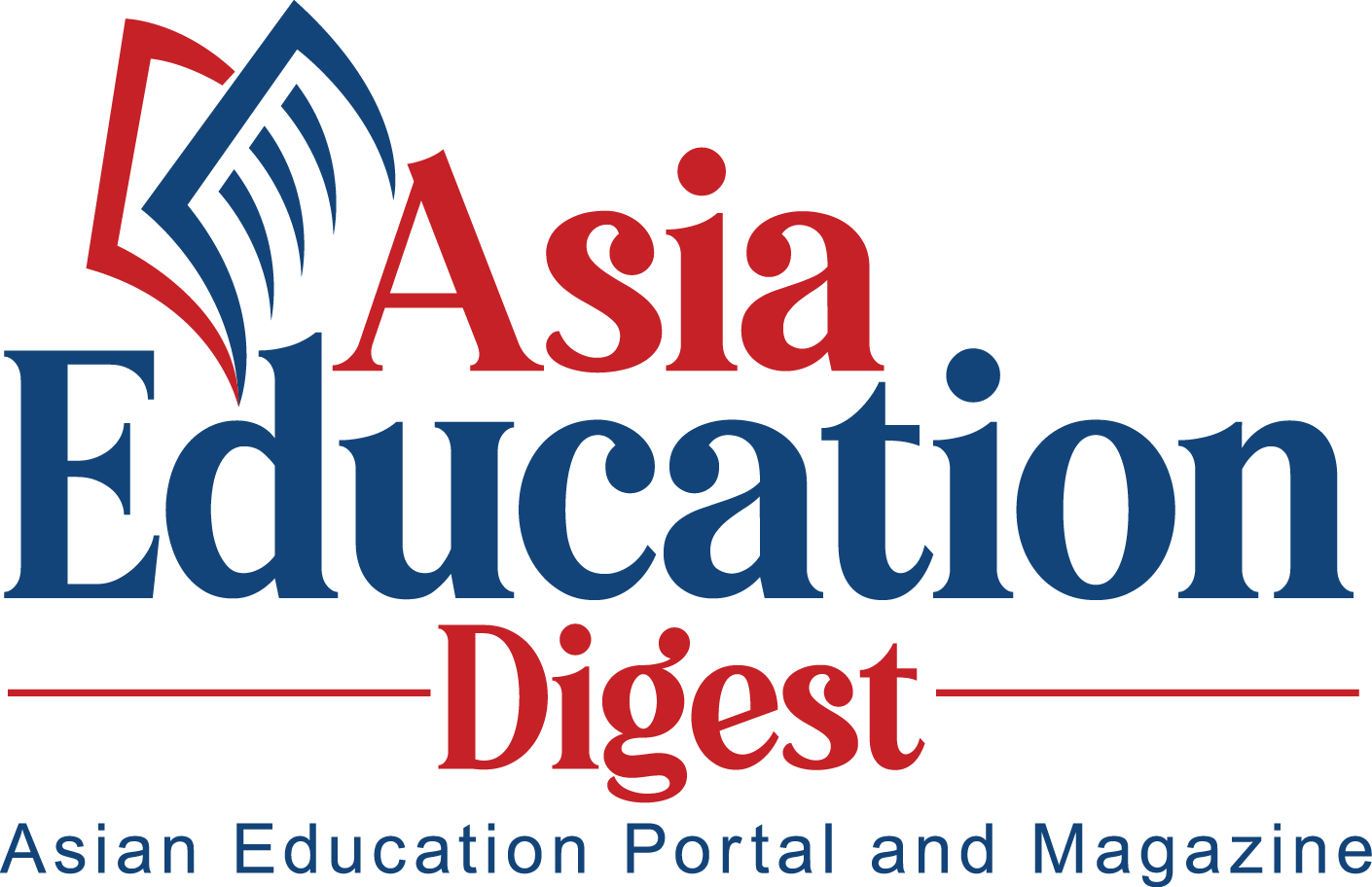Article:
There is no alternative to assessments. It is an indispensable tool for evaluation. However, the focus needs to be adjusted to make the evaluations more useful and effective. A lot depends on the evaluations and hence there is no way to skip it or opt for an alternative.
Besides evaluating one’s merit, examinations play vital roles in a student’s progress and development as an individual. When you closely look into examinations and their different aspects you will discover it is an invincible way to retain knowledge, explore one’s ability for critical thinking, manage time, build up confidence, develop communication skills, understand the effectiveness of implemented teaching procedures, build up the spirit of competitiveness, inspire to learn and create a craving for achievement.
Despite several reasons to look forward to, examinations are often criticized for their unidirectional outcome. Current examination systems are blamed for being more focused on measuring aptitudes than introspecting their quality.
Dr. Maurice Kenneth Dimmock, International Education Consultant, United Kingdom, chatted with us about how examinations can be properly used to ensure quality education. His in-depth discussion, insights, and details make this worth bookmarking.
Question 1: How far can examinations reflect the quality and efficiency of the candidate as a professional that he or she chooses to be?
In today’s competitive job market, the importance of examinations in assessing a candidate’s potential cannot be overstated. However, the question arises. How far can examinations reflect the quality and efficiency of the candidate? The question should be asked in the context of what you are actually assessing. Are you assessing knowledge or skills, is it soft skills or practical skills? It should also be acknowledged that young people gain many skills outside the classroom.
Understanding Examinations and Their Purpose
Examinations are standardized assessments designed to measure a candidate’s knowledge, and abilities in a specific field. They aim to ensure that individuals possess the requisite understanding and competencies necessary. Common types of examinations include:
- Standardized tests (e.g. GCSE, IGCE, A levels, Cambridge Examinations, IB, GRE, GMAT, etc)
- University Entrance exams
- Pre-Employment tests and exams
- Psychological Tests for assessing personality, achievement, attitude and aptitude
- Emotional Intelligence tests
- Multiple choice tests
While these assessments serve as an essential screening tool, their ability to reflect a candidate’s true quality and efficiency can vary significantly.
The Strengths of Examinations
1. Objective Measurement: Examinations provide a structured format for evaluating knowledge and certain skills, allowing for objective comparisons among candidates from around a country or the world such as IGCSE, GMAT, IB, etc. This can be particularly useful for assessing a student’s ability to embark on further study or together with psychological testing when applying for employment.
2. Standardization: By creating a uniform benchmark, examinations help (to) ensure that all candidates meet a minimum level of knowledge and competency, which can be crucial in assessing an ability to enter further education where they are in ‘competition’ with students from around the country and indeed from around the world. Similarly, when applying for a job or profession where in today's global environment students will be applying for positions and will be up against candidates from different cultures and countries.
3. Motivation and Goal Setting: The need to prepare for examinations can motivate candidates to study and engage deeply with their subject matter, fostering a strong foundation of knowledge.
Limitations of Examinations
Despite their strengths, examinations have notable limitations that can hinder their effectiveness in reflecting a candidate’s quality and efficiency:
1. Narrow Focus: Examinations typically assess a limited range of knowledge and skills, often emphasizing rote memorization over critical thinking, creativity, and problem-solving abilities. As a result, candidates may excel in exams, if they have a good memory, yet struggle in real-world scenarios that require broader competencies.
2. Test Anxiety: Many individuals experience anxiety before and during examinations, which can adversely affect performance. This means that a candidate’s exam results may not accurately reflect their true capabilities or potential.
3. Lack of Practical Application: Examinations often do not assess practical skills or real-world applications of knowledge. For example, a candidate may excel in theoretical knowledge but lack the hands-on experience required in their profession.
4. One-Size-Fits-All Approach: Standardised tests may not account for individual learning styles or diverse backgrounds, leading to an incomplete picture of a candidate’s abilities.
While examinations play a significant role in evaluating candidates, they are not the definitive measure of a professional’s quality and efficiency. To truly understand a candidate’s potential, it is essential to adopt a multifaceted approach that includes practical assessments, interviews, and portfolio evaluations and to recognize the limitations of examinations.

Q 2: Please describe the evaluation process that you believe to be the most relevant one. What are its main components and objectives?
To gain a more holistic understanding of a candidate’s quality and efficiency, I believe organizations and educational institutions should explore a mixture of evaluation methods, using both subjective and objective testing. I have found the mixture of evaluation methods listed below to be the most effective. They all have their pros and cons and this is where the skill of the teacher is so important. It also depends, as stated earlier, the mix that is used is dependent on what you are trying to assess. It is important at all times to ensure you use the right assessment method that meets the learning outcomes. Here are a few that I found to be most useful;
1. Portfolio Assessments: Portfolios allow candidates to showcase their work, projects, and achievements, providing a comprehensive view of their skills and experience. This can be in the form of self-assessment, with the teacher acting as a verifier of these achievements. In most cases, this will be done in a team situation, and peers can also contribute to the verification, by means of group discussion, overseen by the teacher. A student may be included in this portfolio, experiences outside the classroom such as gardening, helping with household chores, babysitting, clubs, and societies they are part of, and the skills they gain in the outside world
2. Interviews and Behavioural Assessments: In-person interviews, behavioral assessments, and observation can reveal a candidate’s soft skills, such as communication, teamwork, and adaptability, which are often critical for success in the workplace.
3. Practical Assessments: Simulations, case studies, mock interviews, presentations, and practical tests can provide insights into how candidates apply their knowledge in real-world scenarios, offering a more accurate representation of their capabilities. It is also good to engage with industry and commerce, where an employer will discuss with the students before the project starts and give an experienced evaluation of performance at the end of the exercise. This can be enhanced if the students can visit a company beforehand to see a real-life situation. In a situation where the school includes a short internship, the assessment can be undertaken together with the workplace manager.
4. Peer and teacher Evaluations: Feedback from colleagues and supervisors can provide valuable perspectives on a candidate’s performance, work ethic, and interpersonal skills.
The above can be used, together with formal testing, and examinations to give a more holistic evaluation. It is so important to train teachers through CPD on different types of objective testing and where and when to use them
Question 3: What are its strengths and weaknesses and how effective has it been in evaluation so far?
Each system of evaluation has its weaknesses, especially if an evaluation system is used to measure the wrong outcome. It is so important that the assessment matches the learning outcome it is measuring. I have summarized below some of the limitations of the various models of assessment.
Examinations
A narrow focus increases stress on students which could affect results, and lack of practical application.
Portfolio Assessment
Needs good collaboration between parents, teachers, and peers, who become the evaluators. Students also need guidance on how to attach a level of performance to their portfolio and also what to include and not to include. Often portfolios only showcase the achievements and don’t show any deficiencies. Students grow and develop by knowing their deficiencies and failures and how to overcome them. Also, if the student has to give a presentation, many students are shy and don’t perform well when asked to speak in front of the class. This should then result in the school assisting the student with presentation skills. Portfolio assessment should be combined with Interviews and behavioral assessments
Interviews and Behavioural Assessments
The effectiveness of this form of assessment is really down to the skill of the person or persons conducting the interview and how the assessment is structured. Training of the assessor is crucial to the success and accuracy of this form of assessment. It must be used along with other forms of assessment instead of using it as a stand-alone assessment.
Practical Assessments
The main weakness in this form of assessment is ensuring the person being assessed has actually undertaken the work. This is especially so when one is assessing a project undertaken by a TEAM. Identifying who has done what is crucial. Also important that the person overseeing the project ensures that each member of the team has an opportunity to participate and utilize various skills. One only needs to look at the TV program
‘ The Apprentice’ to see the problems that arise. Again, interviews with the team and individual members of the team. Are crucial to gaining an accurate assessment of the student. The strengths of the above have been discussed in question 2 but I want to emphasize that no one assessment model fits all. It’s the skill of the teacher, to decide the most appropriate assessment method and understand their strengths and weaknesses.

Question 4: How have you integrated the evaluation process with technology or industry trends?
In an era where technology and industry trends are rapidly evolving, educational institutions must adapt their evaluation processes to remain relevant and effective. Integrating technology into the evaluation process not only enhances efficiency but also provides deeper insights into a student's performance and potential.
The Importance of Modernising Evaluation Processes
The integration of technology into the evaluation process allows educational Institutions to:
- Enhance Accuracy: Automated systems reduce human error, providing more reliable assessments.
- Increase engagement: Interactive tools can make the evaluation process more engaging for students, encouraging participation and feedback.
- Facilitate Real-Time Feedback: Technology enables continuous feedback, allowing students to adjust and improve in real-time rather than waiting for test results.
Key Technologies for Evaluation Integration
1. Performance Management Software
Performance management software streamlines the evaluation process by allowing educators to set clear objectives, track progress, and provide ongoing feedback. Features such as goal tracking, 360-degree feedback, and analytics enable a comprehensive view of student performance. Elements of these popular industry or workplace tools may be adapted for use in the classroom.
- BambooHR
- Learnosity
- Mentimeter
- Teacher made
- Exam.net
- Google Forms
2. Data Analytics
Leveraging data analytics can transform how education institutions evaluate student performance. By analyzing trends and patterns in performance data, teachers or institutions can identify strengths and weaknesses, tailor development programs, and make informed decisions. Predictive analytics can also help forecast future performance based on historical data.
3. Artificial Intelligence (AI)
AI can automate various aspects of the evaluation process, from data collection to performance analysis. AI-driven tools can analyze students’ interactions, work patterns, and outcomes to provide insights that human evaluators might overlook. For example, AI can help identify high-potential students or flag those who may need additional support.
4. Learning Management Systems (LMS)
Integrating an LMS into the evaluation process allows educational institutions to track students’ progress. By monitoring progress in knowledge and skill acquisition, institutions can assess the effectiveness of their learning initiatives and align them with performance evaluations.
5. Mobile Applications
With the increasing use of smartphones, mobile applications for performance evaluation provide flexibility and accessibility. Students can receive feedback, complete self-assessments, and engage in performance discussions from anywhere, fostering a culture of
Aligning with Industry Trends
To effectively integrate technology into the evaluation process, educational institutions must stay attuned to industry trends. Here are some key trends to consider:
1. Remote Work and Hybrid Models
Since COVID-19 online, remote, and hybrid work environments have become the norm, and evaluation processes must adapt. Implementing virtual performance reviews, using video conferencing tools, and leveraging cloud-based performance management systems can ensure that evaluations remain effective, regardless of students’ physical locations.
2. Focus on Students Well-Being
In Industry, there is a growing emphasis on employee well-being which requires evaluations to consider mental health and job satisfaction. Integrating well-being metrics into performance evaluations of students can provide a more holistic view of student performance and engagement. Tools should also be used to identify areas where a student may be suffering from a lack of peer engagement or any mental or other issues such as dyslexia.
3. Diversity, Equity, and Inclusion (DEI)
As organizations and educational institutions prioritize DEI, evaluation processes should reflect these values. Implementing bias training for evaluators, using AI to identify disparities in evaluations, and setting DEI-related performance goals can help create a more inclusive evaluation framework.
4. Agile Performance Management
The shift towards agile methodologies in business operations necessitates a more flexible approach to performance evaluations in schools. Agile evaluations are based on values such as trust, collaboration, adaptability, feedback, reliability, continuous improvement, and potential.
Education institutions should consider adopting continuous feedback loops and iterative performance assessments rather than relying solely on examination or a ‘one size fits all’ approach.
Best Practices for Integration
To successfully integrate technology and industry trends into the evaluation process, schools, should engage with industry and identify how their systems can integrate with a school's own system. This can increase buy-in and improve the overall effectiveness of the evaluations.

Question 5: Can you please suggest some of the most effective evaluation processes to assess candidate suitability?
In today’s competitive job market, students face numerous challenges as they transition from academia to the workforce. An effective evaluation system is crucial for assessing their readiness and suitability for employment. Such a system should focus on methods that them to showcase their skills and improve their employability.
Understanding Effective Evaluation Systems for a Transition from Academia to Workplace
An effective evaluation system for students is a structured approach that assesses skills, competencies, and readiness for employment. These systems can include various tools and methods as mentioned previously, such as assessments, interviews, and real-world projects. The goal is to provide students with a clear understanding of their strengths and areas for improvement, enabling them to present themselves confidently to potential employers.
Key Components of an Effective Evaluation System
1. Competency-Based Assessments
Competency-based assessments evaluate students based on their ability to demonstrate specific skills and knowledge relevant to their desired job roles. This approach focuses on real-world applications rather than theoretical knowledge, ensuring students are prepared for the demands of the workplace.
2. Portfolio Development
Encouraging students to create a professional portfolio can be an effective evaluation tool. A portfolio showcases a student’s work, projects, and achievements, allowing potential employers to assess their capabilities at a glance. It provides tangible evidence of skills and creativity, setting candidates apart in a crowded job market.
3. Internships and Practical Experience
Internships are invaluable for students in trying to understand the workplace. They provide hands-on experience and the opportunity to apply classroom knowledge in real-world settings. Evaluation systems that include feedback from internship supervisors can help students understand their performance and areas for growth.
4. Mock Interviews and Feedback
Conducting mock interviews is an excellent way to prepare students for the actual interview process. Students get to act out the best responses, get feedback for corrections, and boost confidence as well. Incorporating industry professionals as interviewers can further enhance the realism of the experience.
5. Soft Skills Assessment
Soft skills like communication, problem-solving, and teamwork are treated as top priorities by employers. Evaluation systems should include assessments that measure these skills through group projects, presentations, and peer feedback. This holistic approach ensures students are all-rounded candidates.
6. Self-Assessment and Reflection
Encouraging self-assessment helps students identify their strengths and areas for improvement. Reflection exercises can guide students in setting career goals and developing action plans to enhance their employability. Practicing this will help you to inculcate a growth mindset that will help you for lifelong learning.
Implementing Effective Evaluation Systems
To implement an effective evaluation system, educational institutions, and career services must collaborate. Here are some strategies to consider:
Integrate Evaluation into Curriculum: Embed evaluation components into academic programs, ensuring students receive consistent feedback throughout their studies.
Engage Employers: Collaborate with local businesses and industry leaders to design evaluation criteria that align with current job market needs.
Leverage Technology: Utilise online platforms for assessments, portfolio creation, and feedback collection. Technology can streamline the evaluation process and make it more accessible for students.
Encourage Continuous Improvement: Foster a culture of continuous feedback and improvement, where students are encouraged to seek and act on feedback regularly.
An effective evaluation system for students is essential for preparing them for the workforce. By focusing on competency-based assessments, portfolio development, practical experiences, and soft skills, educational institutions can equip students with the tools they need to succeed in their job search. As the job market continues to evolve, implementing these strategies will help students stand out and secure meaningful employment.
Content Disclaimar
Dr. Maurice Kenneth Dimmock, International Education Consultant, United Kingdom, chatted with us about how examinations can be properly used to ensure quality education. His in-depth discussion, insights, and details make this worth bookmarking.


